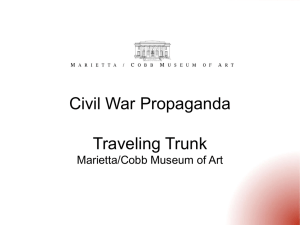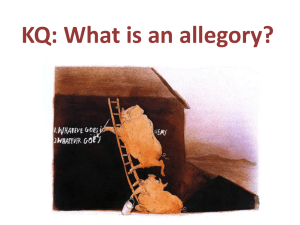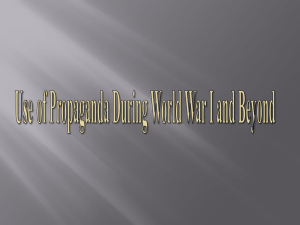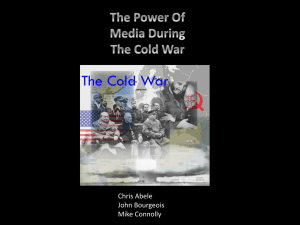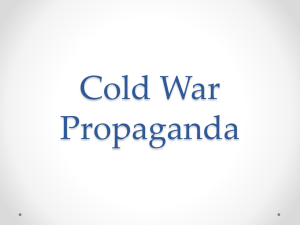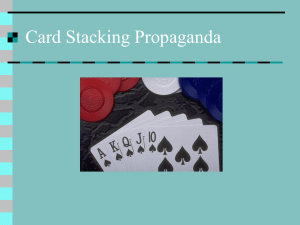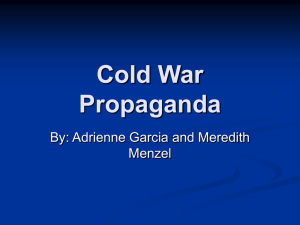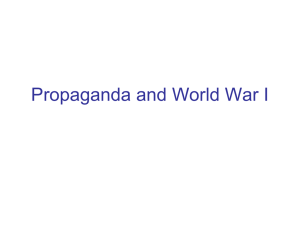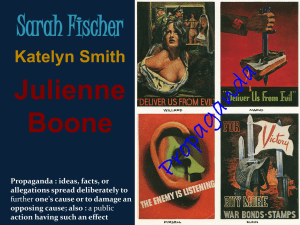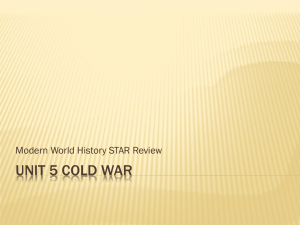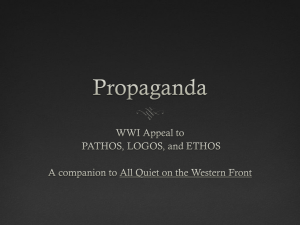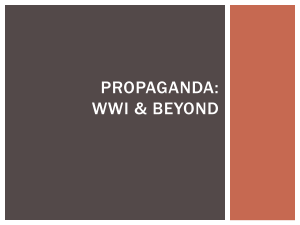Honors Project - Propaganda and the Cold War
advertisement
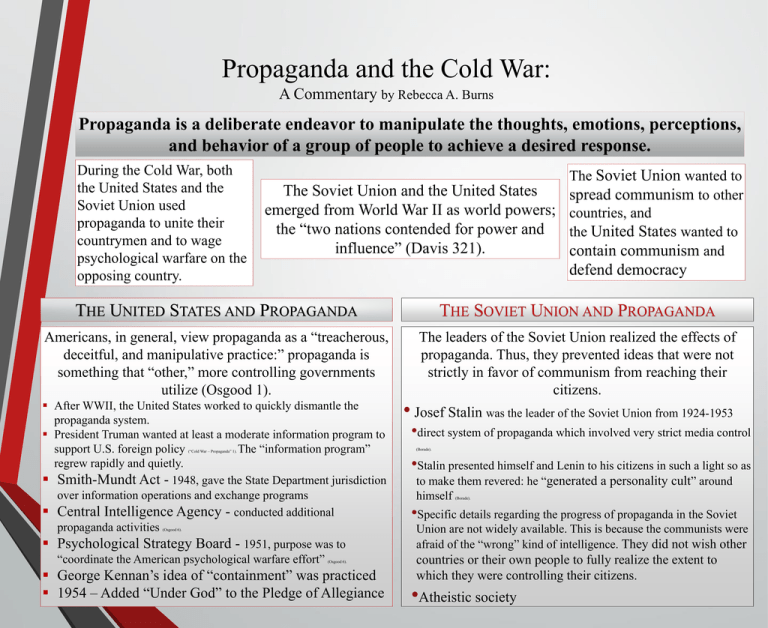
Propaganda and the Cold War: A Commentary by Rebecca A. Burns Propaganda is a deliberate endeavor to manipulate the thoughts, emotions, perceptions, and behavior of a group of people to achieve a desired response. During the Cold War, both the United States and the Soviet Union used propaganda to unite their countrymen and to wage psychological warfare on the opposing country. The Soviet Union wanted to The Soviet Union and the United States spread communism to other emerged from World War II as world powers; countries, and the “two nations contended for power and the United States wanted to influence” (Davis 321). contain communism and defend democracy THE UNITED STATES AND PROPAGANDA THE SOVIET UNION AND PROPAGANDA Americans, in general, view propaganda as a “treacherous, deceitful, and manipulative practice:” propaganda is something that “other,” more controlling governments utilize (Osgood 1). The leaders of the Soviet Union realized the effects of propaganda. Thus, they prevented ideas that were not strictly in favor of communism from reaching their citizens. After WWII, the United States worked to quickly dismantle the propaganda system. President Truman wanted at least a moderate information program to support U.S. foreign policy The “information program” regrew rapidly and quietly. Smith-Mundt Act - 1948, gave the State Department jurisdiction over information operations and exchange programs Central Intelligence Agency - conducted additional propaganda activities Psychological Strategy Board - 1951, purpose was to “coordinate the American psychological warfare effort” • Josef Stalin was the leader of the Soviet Union from 1924-1953 (“Cold War – Propaganda” 1). (Osgood 6). (Osgood 6). George Kennan’s idea of “containment” was practiced 1954 – Added “Under God” to the Pledge of Allegiance •direct system of propaganda which involved very strict media control (Borade). •Stalin presented himself and Lenin to his citizens in such a light so as to make them revered: he “generated a personality cult” around himself (Borade). •Specific details regarding the progress of propaganda in the Soviet Union are not widely available. This is because the communists were afraid of the “wrong” kind of intelligence. They did not wish other countries or their own people to fully realize the extent to which they were controlling their citizens. •Atheistic society Propaganda and the Cold War: A Commentary by Rebecca A. Burns Mediums of Propaganda in The USA and the Soviet Union UNITED STATES Newspapers, books, art, posters, radio messages, television, documentaries, and films were all utilized as forms of propaganda. Newspapers were Comic books were very “America’s main source of information during the Cold War era” (Cold War, Media Use 11). Jackson Pollock, “became a weapon of the Cold War” through his art (Lin). Political posters were used to depict the strength and nobility of the American democracy and ideals, and inspired fear of the Soviets through bold images. Renamed The Woman on Pier 13 because the original title clearly resonated Articles exploiting a fear of communism destroying American lives propaganda SOVIET UNION This poster shows the impending danger of the “iceberg” of communism that could “sink” the entire U.S. Jackson Pollack’s paintings expressed the freedom of expression enjoyed in democratic countries Iron Man battles the infamous Red Barbarian The movie, My Son John, shows a family torn apart by their son’s becoming a communist successful in influencing children. Iron Man battled with notorious communist villains, such as the Red Barbarian, the Crimson Dynamo, and the Mandarin (Fellman 1). Anti-communist science fiction books were written for adult audiences in the 1950s (Davis 345). Political posters, radio and television broadcasts, and military parades were used in the Soviet Union. George Orwell’s book, Animal Farm, was written as an allegory for the Communist society Political posters were Military parades played the most effective modes of propaganda (Aulich 4). These posters gave the communist leaders the ability to present themselves and their ideas to their countrymen in the most favorable light. Other types of political posters showed that a large role in boosting the morale of the citizens of the Soviet Union Large posters/banners depicting the political leaders emphasized the hierarchy of authority and gave the participants a feeling of reverence towards their leaders (Aulich Americans were power hungry and anxious to wage nuclear war Stalin holding the future of the Soviet Union. The message: he is preparing a better world for your children A caricature of “Uncle Sam” was often used to represent the United States, and he was frequently shown as an evil, badly dressed older man bent on destroying the Soviet Union (Soviet Propaganda Posters). The military parades were constant reminders of the strength of the Soviet Union, and discouraged uprisings. 85). Radio and television broadcasts were generally unavailable because of the damage of WWII April 8, 2014
